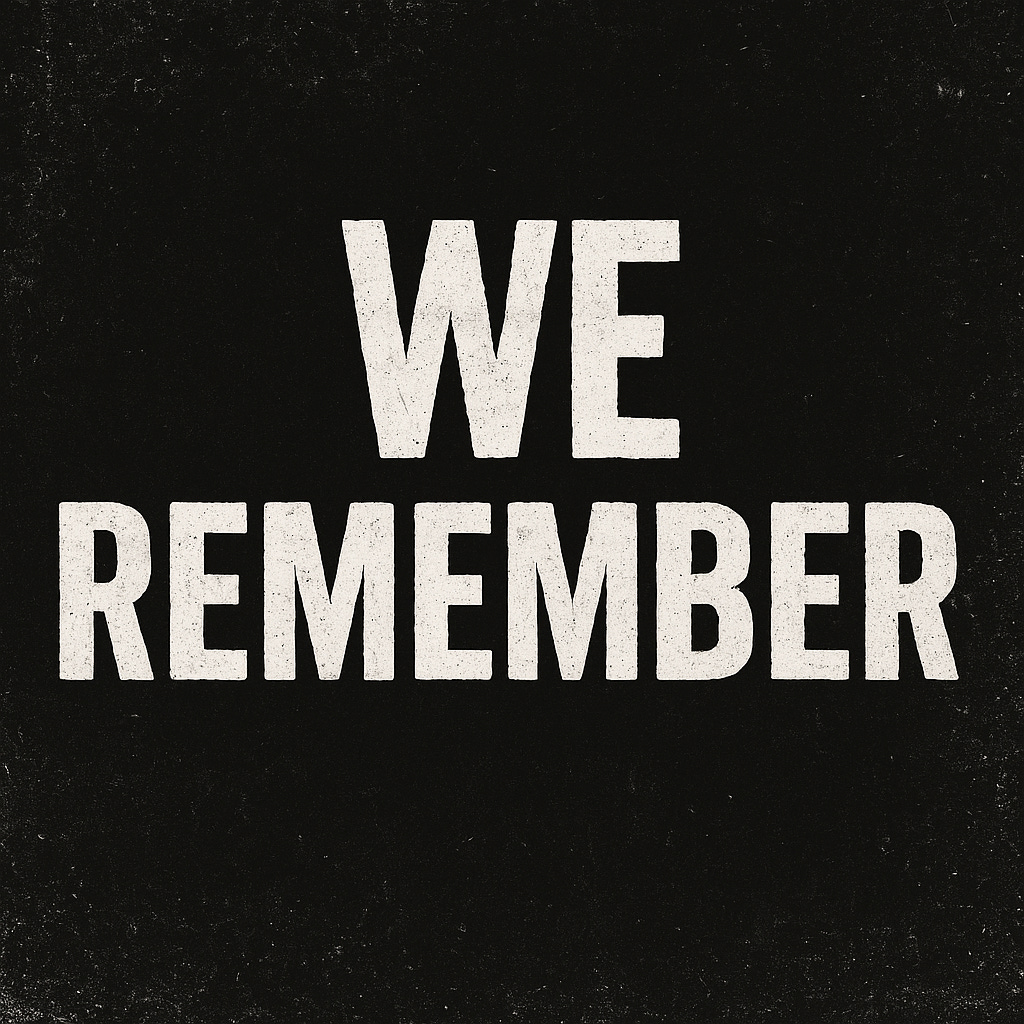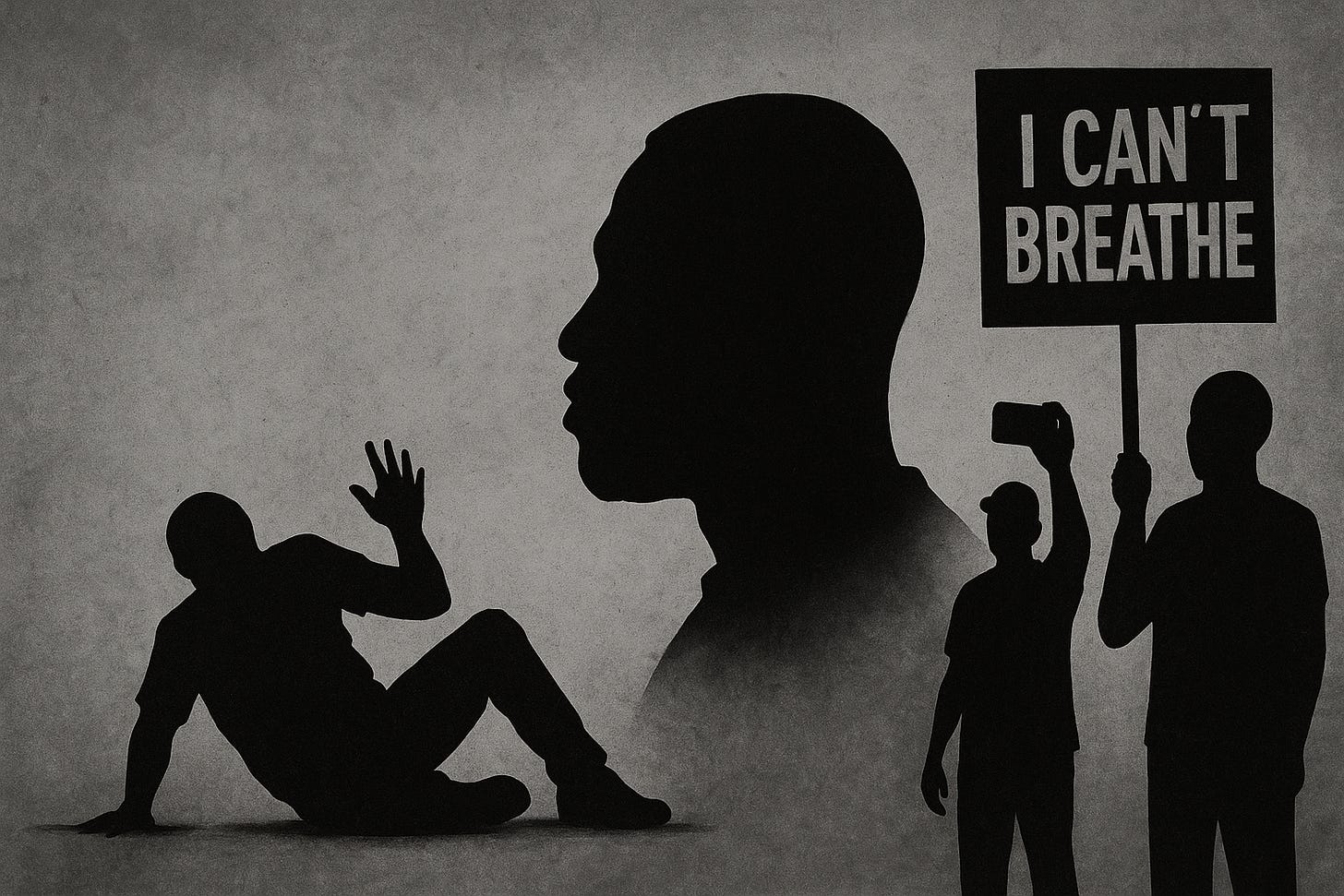We Remember
A longform reflection on protest, power, and the images that never leave us
I was a kid in 1991, not so young that I didn’t know what I was seeing, but young enough that it became one of the first things I truly understood.
Rodney King. On the ground. Surrounded. Struck again and again with batons while a camcorder captured every brutal second. The video aired on the news that night, and again, and again. It played on repeat, not just on the TV, but in my memory. It was unshakable.
I didn’t have the vocabulary for systemic violence. I didn’t know about LAPD’s history, or qualified immunity, or how the justice system could twist to protect those in uniform. I knew, however, with complete clarity, that what I was watching was wrong.
Now, decades later, I’m watching it again, not just once, but from a dozen angles. Not just on the evening news, but live, in real time, streamed from the pockets of protesters, journalists, and bystanders.
And still the batons swing. The rubber bullets fly. The people are on the ground, bewildered, compliant, brutalized. The press is shoved, silenced, and arrested. The same department. The same city. The same American impulse to crush what cannot be controlled.
How did they not learn from King? Or from Floyd? Or from any of the others?
We just hit 15,000 subscribers—thank you!
Get exclusive access for just $1/week or $52 a year.
Get exclusive analysis and fearless reporting you won’t find in corporate media.
Four Stories Colliding
To understand what’s happening right now in Los Angeles and across the country, you have to see the four stories colliding in real time. They don’t compete. They amplify one another.
Police Brutality
In downtown LA, LAPD officers on horseback encircle a man, white, red-bearded, alone. He’s already on the ground. He doesn’t fight. He doesn’t run. One officer raises what looks like a baton. The others press in close, their horses inches from his body. He tries to stand. They don’t let him.
It’s not an arrest. It’s not a riot. It’s control for control’s sake.
Elsewhere, mounted units patrol protest zones like they’re war fronts. Rubber bullets and tear gas rain down. At one point, Australian journalist Lauren Tomasi is struck in the leg live on air. The officer turns, aims, and fires. No warning. No riot. Just a broadcast interrupted by blunt force.
Media Suppression
Jason Carroll, a national correspondent for CNN, is on scene. Credentialed. Filming. Calm. LAPD officers approach, detain him, and escort him out. He asks, “I’m not being arrested, right?” They say no—but tell him he “can’t come back.”
He hadn’t broken any law. He wasn’t in danger. He was reporting, and that made him inconvenient.
These aren’t isolated cases. Dozens of journalists across LA have been detained, hit, or removed despite wearing press IDs, despite filming in public, despite the First Amendment. And it’s not subtle. The cameras are rolling. They act anyway.
Agitators and Chaos
In the shadow of legitimate protest, small, fast-moving crews—masked, mobile, deliberate—ignite fires, smash windows, and disappear. Some torch Waymo cars. Others throw bricks, taunt police, film themselves and vanish.
They don’t chant. They don’t hold signs. They aren’t part of the movement. They’re part of the distraction. Whether they’re anarchists, opportunists, or infiltrators doesn’t matter in the moment. Their presence becomes the excuse. Their spectacle becomes the headline.
Then there are the police staging their own chaos.
Solidarity Rising
And yet, from Cedar Rapids to San Francisco, from Philadelphia to Portland, people are rising peacefully in the thousands, holding signs, locking arms, and chanting for justice, sanctuary, and dignity.
SEIU chapters rallied to demand the release of David Huerta, detained during ICE raids in LA. Immigrant communities organize mutual aid. Young people march with cardboard signs that say “We see you.”
This is the real story, not the flames, not the smoke, but the fabric of America, threaded city to city, with people who refuse to look away.
Why It’s Different, and Yet the Same
It’s not 1991.
We all carry cameras now. We stream in real time. The footage isn’t leaked. It’s the expectation. There’s no grainy VHS passed to a newsroom in secret. There’s no waiting for the six o’clock anchor to tell us what happened. We see it as it unfolds. We rewind it. We post it. We amplify it.
And yet, we’re still watching the state brutalize people, not in the dark, not by accident, in full view.
That’s what makes this moment feel both hauntingly familiar and strangely modern.
In 1991, we were told Rodney King’s beating was an aberration, “not who we are.” In 2020, we were told George Floyd’s murder was a reckoning, “never again.” But here we are. In 2025, with cameras everywhere, officers are still swinging. Journalists are still bleeding. Protesters are still on the ground.
It’s not that they haven’t learned. It’s that they believe they can get away with it anyway.
They’ve adapted to the visibility. The cameras no longer deter. They’re just part of the landscape. They know the footage will spread. They know the world will watch. And still, they act.
For many in power, the calculation hasn’t changed. Visibility isn’t a threat. Accountability is. And as long as the cameras roll but the consequences don’t, the behavior persists.
But something else persists, too, the resistance, the solidarity, the insistence on being seen not as suspects or threats, but as people demanding dignity.
This moment is different because the lie is harder to sell. The state cannot unsee what we all now watch in real time.
The Camera Doesn’t Lie
What made Rodney King real to us wasn’t the police report. It was the video.
What made George Floyd’s death undeniable wasn’t the trial. It was the footage.
And now, once again, we’re watching.
A man on the ground, circled by officers on horseback.
A reporter, struck on live TV.
A crowd, silenced with gas and rubber bullets.
A camera, held steady in a trembling hand.
We see it. We replay it. We remember.
The camera doesn’t lie. It doesn’t forget. It doesn’t look away.
It isn’t just proof. It’s memory, a record of who we are and what we allow.
Those of us who remember Rodney King carry the loop in our heads. Those who witnessed George Floyd’s final breath carry the sound. Now, a new generation carries the reel from LA.
We remember who stayed peaceful. We remember who struck first. We remember who lit fires, who told lies, who aimed at the press. We remember those who marched, those who filmed, and those who refused to disappear. We remember who sang and who danced.
This time, they cannot say it didn’t happen.
We watched.
We watch still.
And we won’t forget.
We just hit 15,000 subscribers—thank you!
Get exclusive access for just $1/week or $52 a year.
Get exclusive analysis and fearless reporting you won’t find in corporate media.







I feel for my children and grandchildren. I hope I am alive to see hellfire rein down on every MAGA voter.
I remember Rodney King with utter clarity...I was in Japan at the time, at an AFRTS station. We pre-empted our regular programming to broadcast live news from the States of the rioting and violence. It baffled, traumatized, and sickened us.
One of my pals was in basic training at the time, which is a hermetically-sealed environment. You, 56 other recruits, a stuffy barracks compartment, two screaming drill instructors (called "Recruit Company Commanders" in the Navy), doing their best imitation of Gunnery Sergeant Hartmann from "Full Metal Jacket." The outside world is not even an abstraction. It does not exist.
Out of the blue, an officer entered the compartment, and told any recruit who came from Los Angeles would be allowed to phone home from the phone center, as there were "disturbances" in the city.
Disturbances? What the hell did that mean?
A few of the recruits were from LA, and they marched over to the building, phoned home collect, and returned pale. "Man, South Central is going up," they said.
Disturbances.
This is not a "disturbance." This is the beginning of an all-out assault on our democracy, by our government.